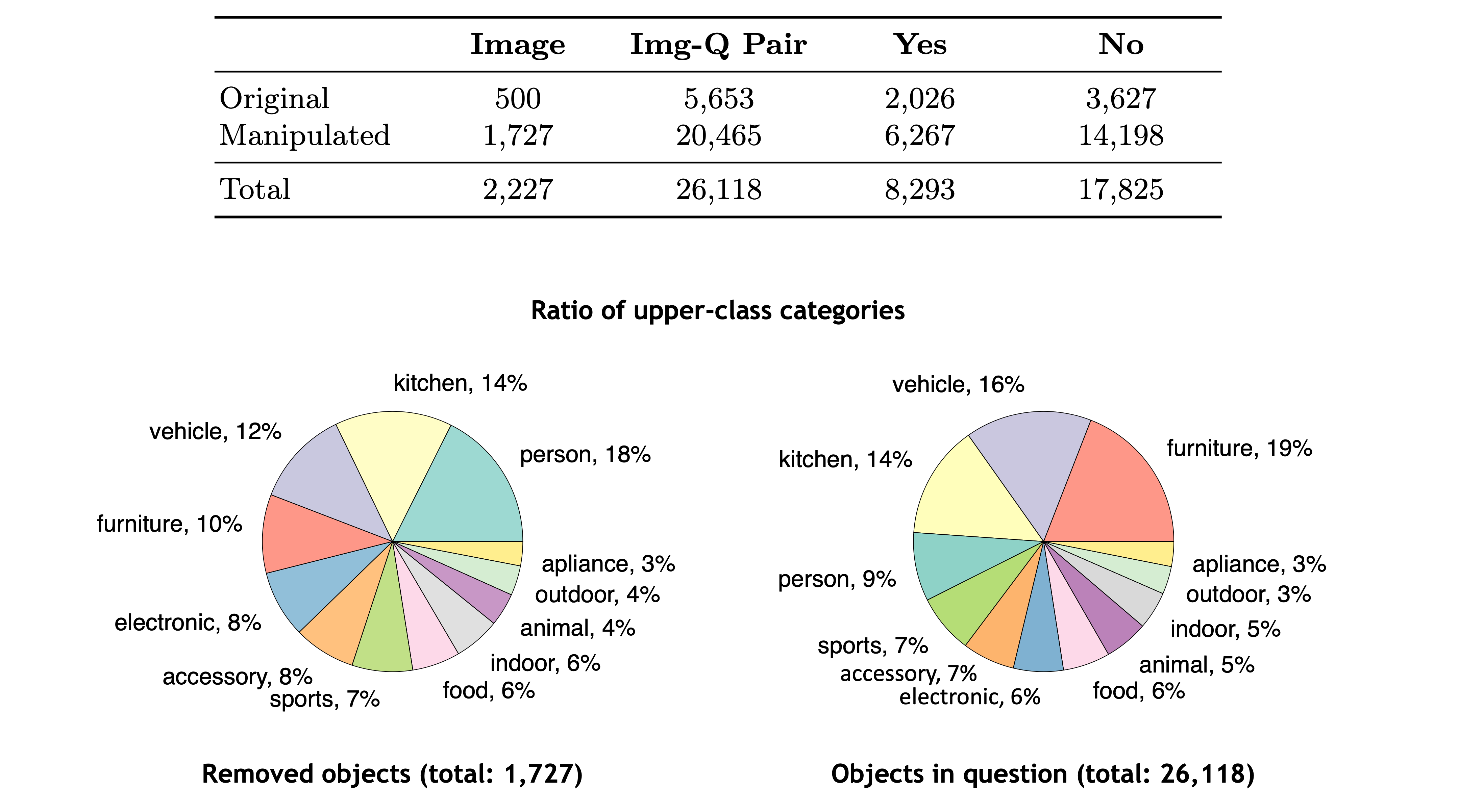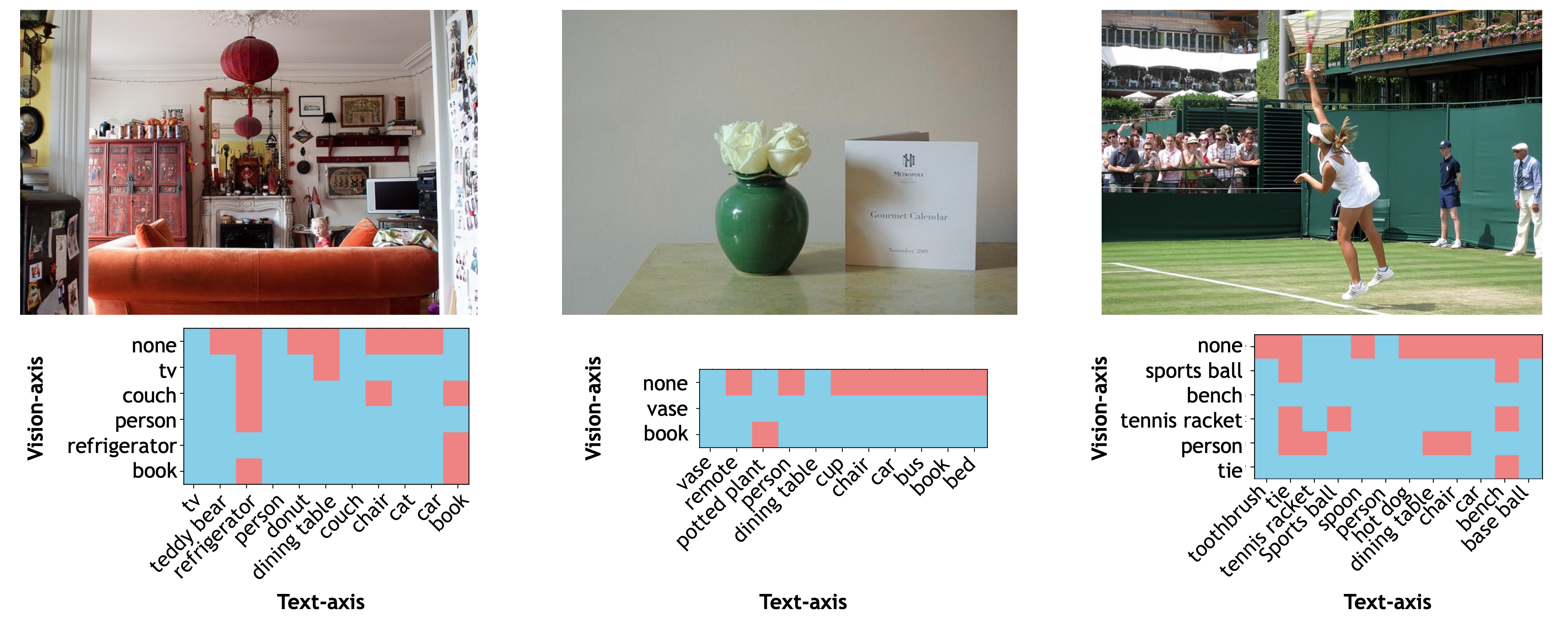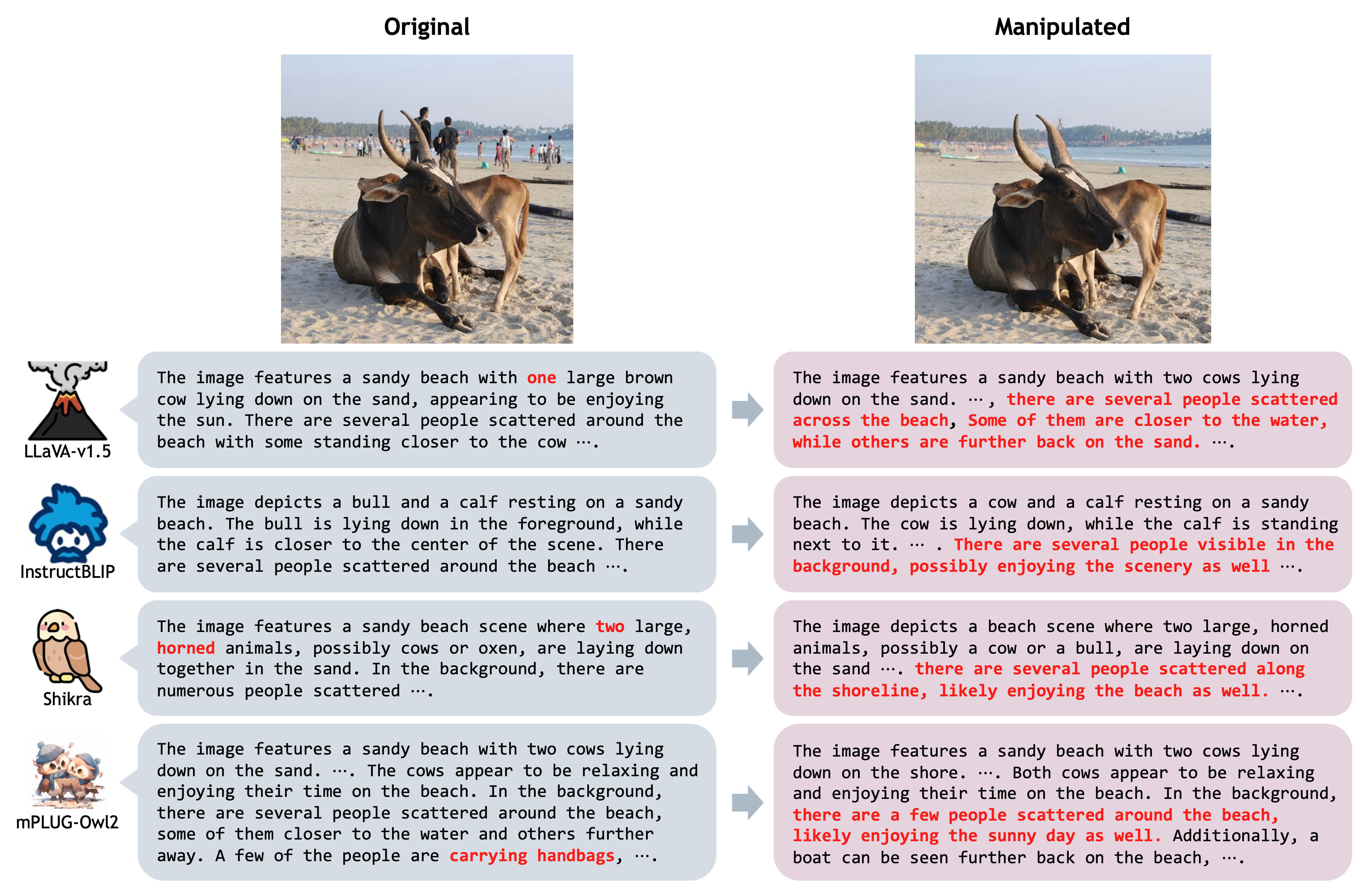
Samples of the original and manipulated images in the BEAF dataset. The first column contains original images,
and the rest of the columns contain manipulated images. The removed object is noted below each image.
Large vision language models (LVLMs) perceive the world through a combination of a visual encoder and large language models (LLMs). The visual encoder, pre-trained on large-scale vision-text datasets, provides zero-shot generalization to visual data, and LLMs endow the high reasoning ability to LVLMs. It leads LVLMs to achieve high performance on wide benchmarks without fine-tuning, known as zero or few-shot capability of LLMs. However, recent studies show that LVLMs are vulnerable to hallucination. This undesirable behavior degrades reliability and credibility, thereby making users unable to fully trust the output from LVLMs.
To enhance trustworthiness and better tackle the hallucination of LVLMs, we curate a new evaluation dataset, called the BEfore-AFter hallucination dataset (BEAF), and introduce new metrics: True Understanding (TU), IGnorance (IG), StuBbornness (SB), and InDecision (ID). Unlike prior works that focus only on constructing questions and answers, the key idea of our benchmark is that we manipulate visual scene information by image editing models and design the metrics based on scene changes. This allows us to clearly assess whether LVLMs correctly understand a given scene by observing the ability to perceive changes. We also visualize the correctness heatmap by virtue of our two-axis view: vision and text. Upon evaluating LVLMs with our dataset, we observed that our metrics can reveal different aspects of LVLM hallucination.







This work was partly supported by Institute of Information & communications Technology Planning & Evaluation (IITP) grant funded by the Korea government(MSIT) (No.2021-0-02068, Artificial Intelligence Innovation Hub; No.2022-0-00124, Development of Artificial Intelligence Technology for Self-Improving Competency-Aware Learning Capabilities; No.RS-2019-II191906, Artificial Intelligence Graduate School Program(POSTECH))
@inproceedings{yebin2024beaf,
title = {BEAF: Observing BEfore-AFter Changes to Evaluate Hallucination in Vision-language Models},
author = {Ye-Bin, Moon and Hyeon-Woo, Nam and Choi, Wonseok and Oh, Tae-Hyun},
booktitle = {European Conference on Computer Vision (ECCV)},
year = {2024},
}